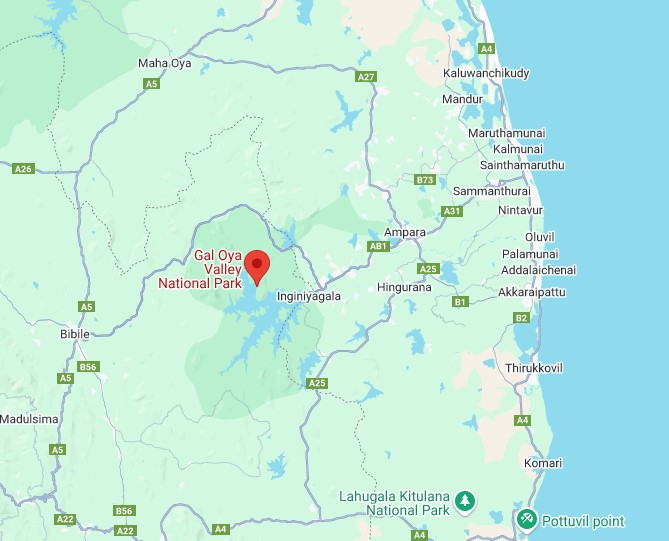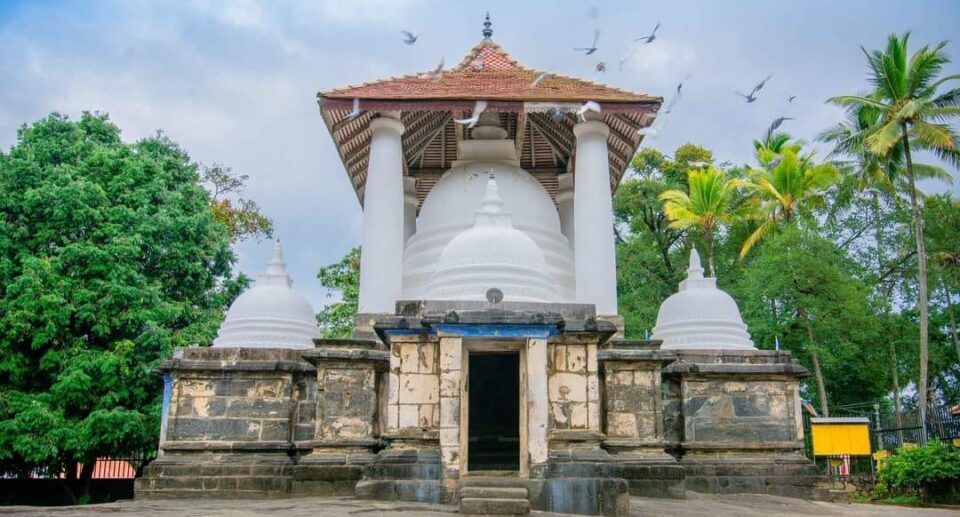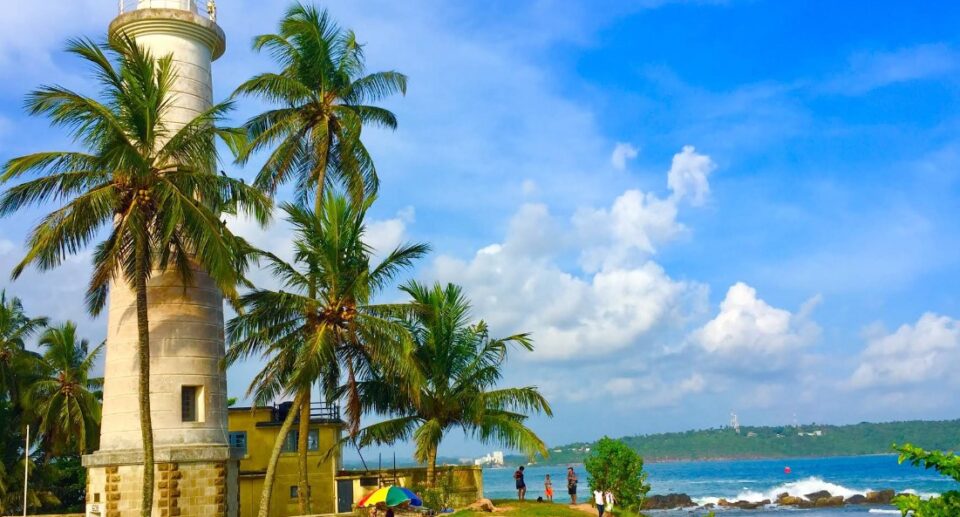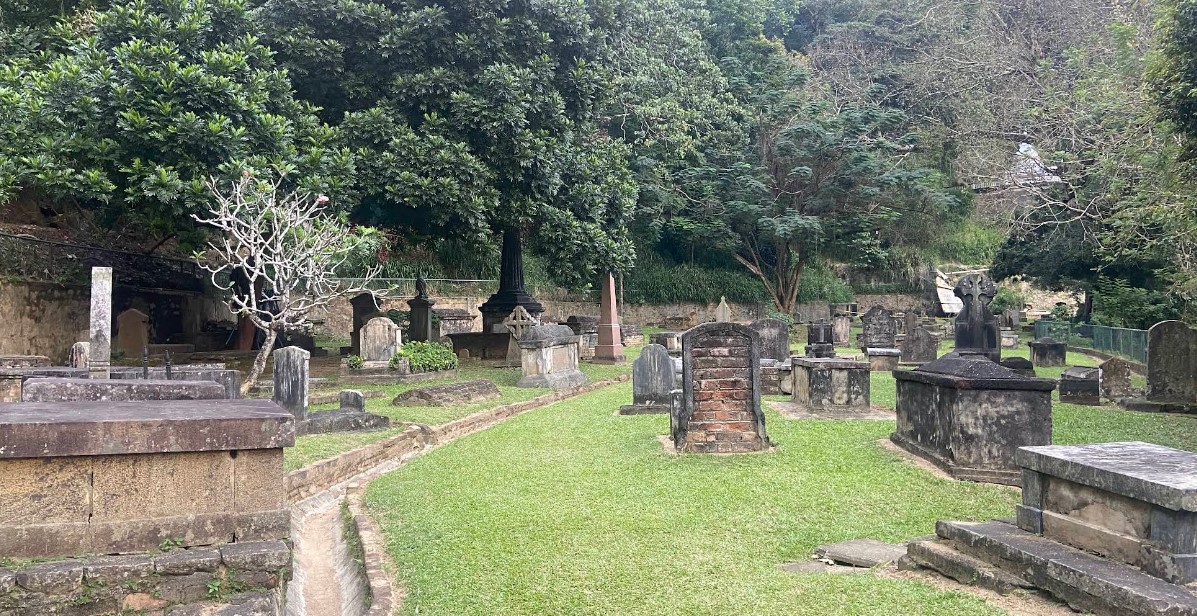Gal Oya Valley National Park: Sri Lanka’s Hidden Wildlife Sanctuary
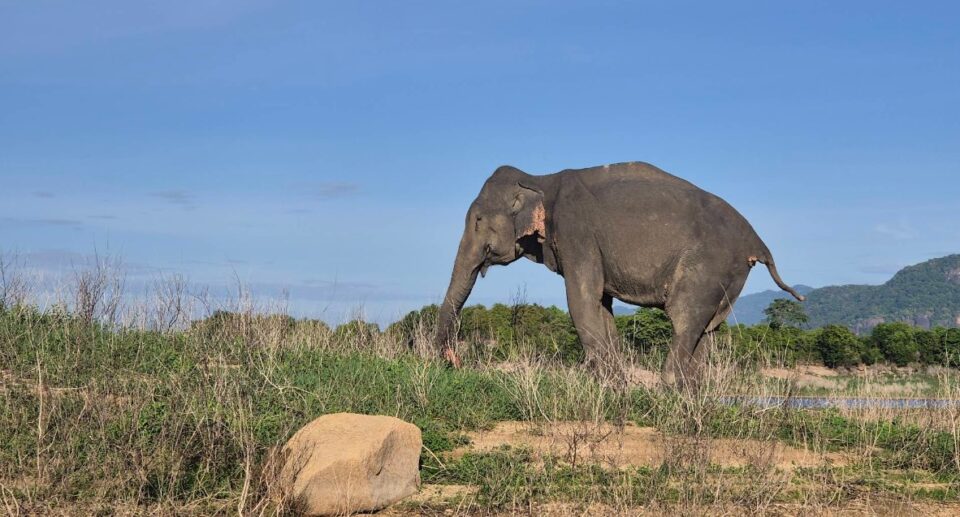
Located in the nation’s southeast, Gal Oya National Park is an untouched and diverse ecosystem that remains one of the country’s better-kept secrets. Whereas more tourist-oriented national parks such as Yala or Udawalawe are overcrowded, Gal Oya is less populated, offering a more relaxed and secluded wildlife experience. Spanning a region of about 25,900 hectares, it was formed in 1954 mainly to safeguard the Senanayake Samudraya catchment, the largest reservoir in Sri Lanka.
This park is unique not only in its biodiversity but also in being Sri Lanka’s only national park in which safari by boat is possible. This special feature allows the possibility for viewers to observe wildlife in a way unique to any other park in the country.
Historical and Ecological Significance
Gal Oya National Park was created along with the Gal Oya Development Scheme, a major irrigation scheme devised after Sri Lanka gained independence. The intention was to support agriculture in the dry zone by improving the water resources management. Senanayake Samudraya reservoir, in honor of Sri Lanka’s first Prime Minister, D.S. Senanayake, was the central part of this development.
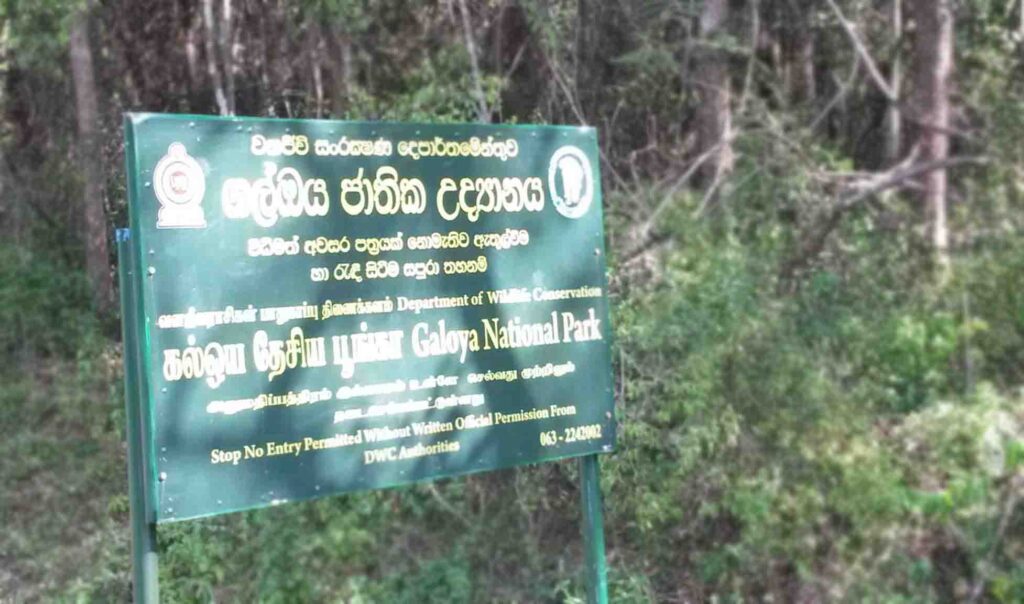
To protect the watershed and preserve surrounding plants and animals, the government declared the surrounding forest a national park. Over the decades, Gal Oya has served as a vital haven for many plant and animal species, some being Sri Lanka’s endemics.
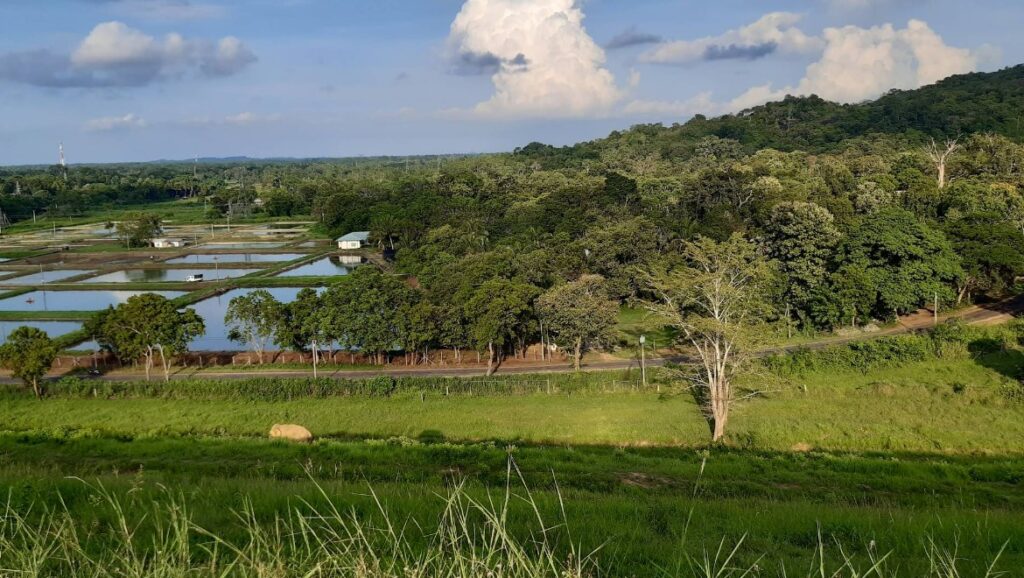
Geography and Landscape
Gal Oya National Park takes place in a transition zone between Sri Lanka’s wet and dry zones, providing a combination of evergreen forests, scrub, grassland, and aquatic habitats. The terrain is mostly undulating with scattered rocky knolls and hill country, the most notable of which is Danigala, commonly known as Punchi Sigiriya or Little Sigiriya, which boasts ancient cave dwelling and pre-historic rock painting.
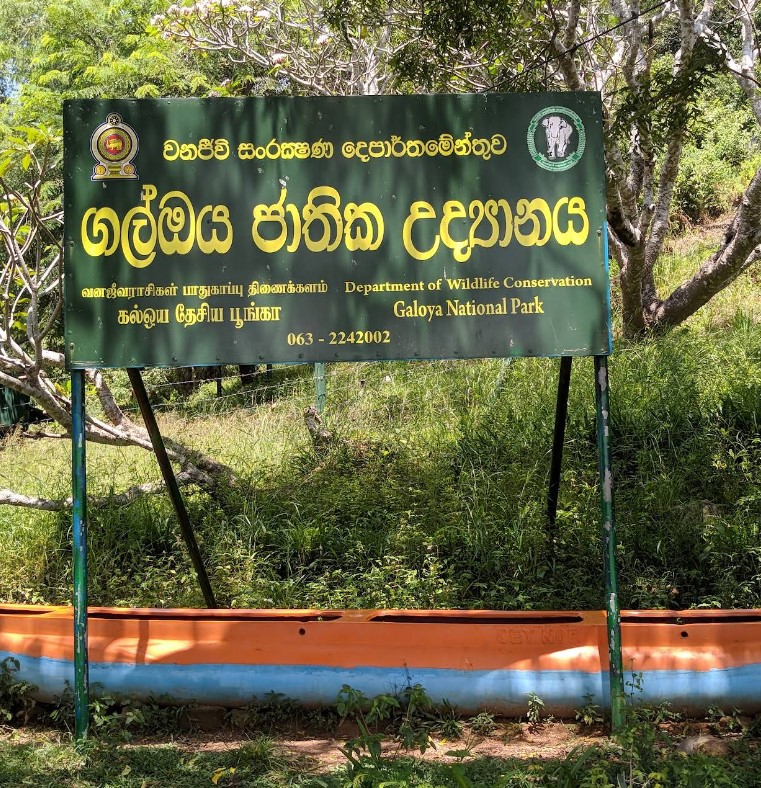
In the middle of the park is the Senanayake Samudraya reservoir, extending for more than 91 square kilometers to capacity. The lake has numerous small islands distributed over it, making a picturesque landscape and offering nestling sites and protection for birds and other creatures.
Flora
Gal Oya has over 450 plant species that indicate dry-zone forests and aquatic environments. Dry evergreen forest is the most common vegetation, characterized by plants such as: Manilkara hexandra (Palu),Diospyros ebenum (Ebony),Chloroxylon swietenia (Satinwood),Azadirachta indica (Neem)
Packed densely on the reservoir and wet land banks are lotus and water lily, yielding colorfully populated aquatic habitat. The juxtaposition of forests and water bodies feeds a rich plant life network, laying the groundwork for the high biodiversity of the park.
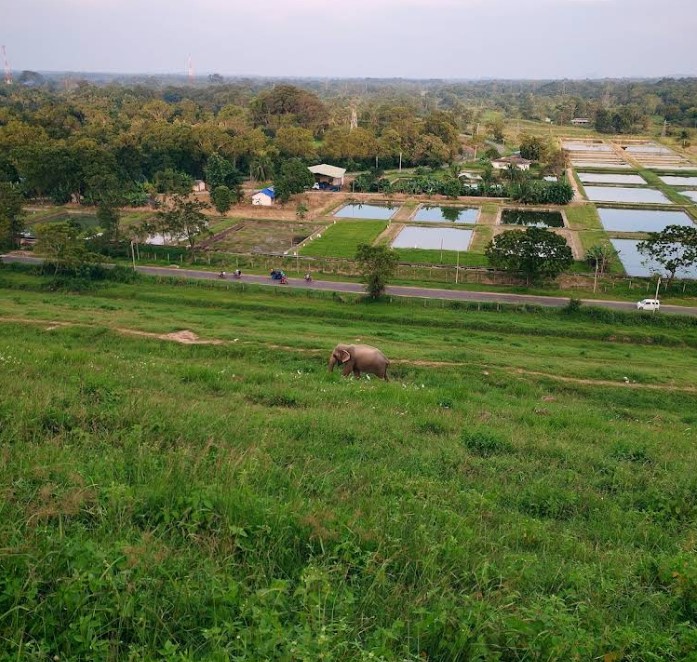
Fauna: A Wildlife Sanctuary
Gal Oya is an important sanctuary for a wide variety of animals, some of Sri Lanka’s most recognizable and endangered species. It is one of the best locations in the nation for viewing Asian elephants in their natural state, particularly because of the surprising behavior they exhibit here swimming between islands across the reservoir, a rare and spectacular phenomenon.
Mammals
There are about 32 species of mammals in the park. Some of the most interesting ones are: Asian elephant (Elephas maximus) Leopard (Panthera pardus kotiya) – though rare, they exist in the park, Sloth bear (Melursus ursinus),Water buffalo, Spotted deer, Muntjac (barking deer), Wild boar, Toque macaque and gray langur.
Birds
Gal Oya is a birdwatcher’s paradise, with a recorded 150 species of birds, including:,White-bellied sea eagle, Grey-headed fish eagle, Cormorants, Darters, Pelicans, Lesser adjutant stork, Indian pied kingfisher
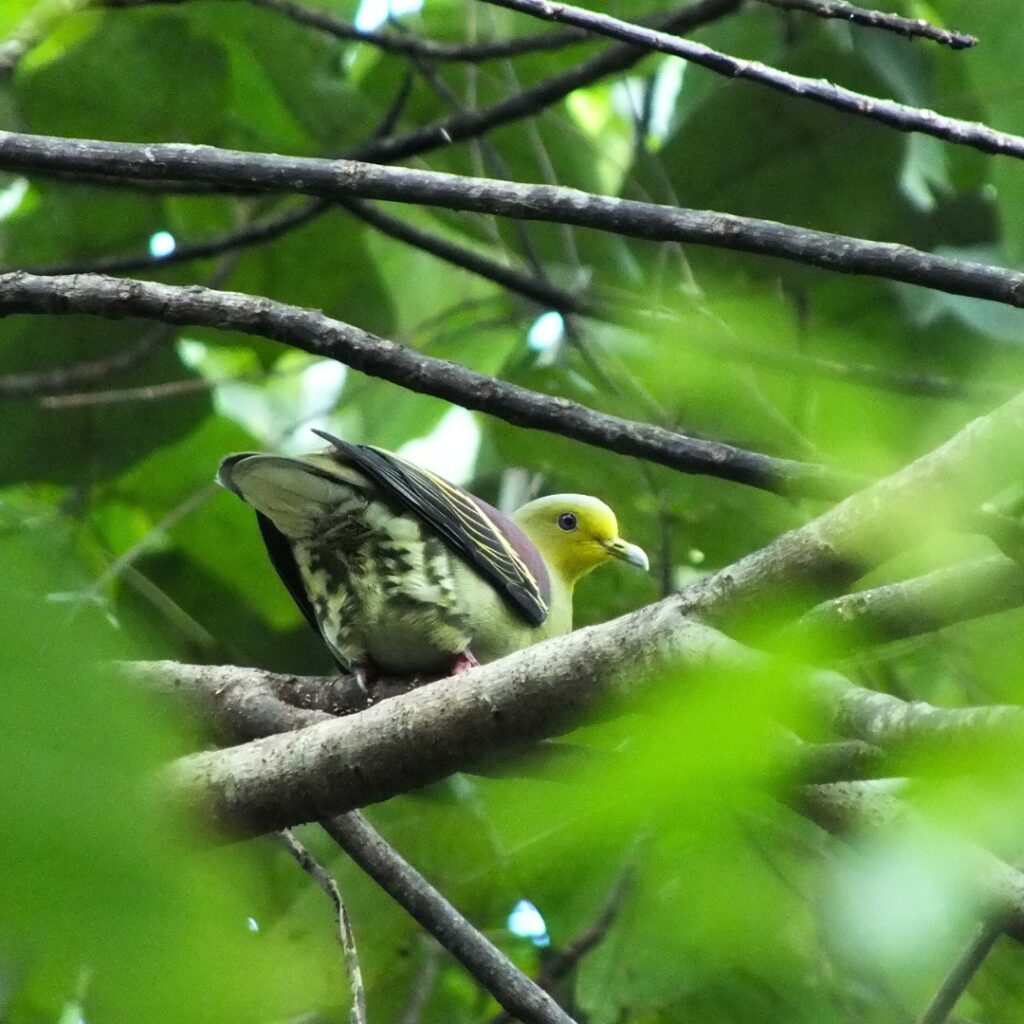
The reservoir contains a number of islands that are essential nesting grounds for these birds, especially during the breeding season. The park also receives migratory birds during certain times of the year.
Reptiles and Amphibians
The park has various reptiles, which are as follows:, Mugger crocodile, Water monitor lizards, Pythons Other species of turtles and amphibians, which primarily inhabit the wetlands
Unique Experiences
What sets Gal Oya apart from other national parks in Sri Lanka is the boat safari on Senanayake Samudraya. Jeep safaris are common all over the country, but boat safaris offer a rare opportunity to observe animals from the water. Elephants swimming between islands, crocodiles basking on the beach, and birds flying over the lake are just a few of the breathtaking views that await.
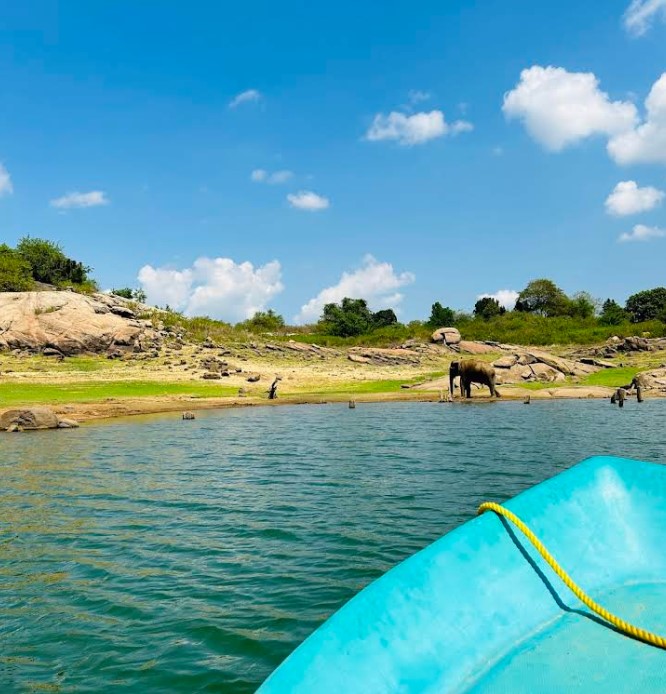
Moreover, visitors can hike up Nilgala, a park hotspot of biodiversity famous for having medicinal plants as well as butterflies. Another site of interest is Danigala Rock, a place linked with ancient Vedda myths and even said to have connections with very early UFO encounters, giving an otherworldly feel to the park.
Indigenous Vedda Community
One of the greatest cultural attractions of Gal Oya is that it borders on some of the very last Vedda settlements, Sri Lanka’s original forest-dwelling aborigines. With proper guidance, tourists can partake in community-based ecotourism, witnessing the Vedda way of life, their traditions, and how they live in harmony with the forest.
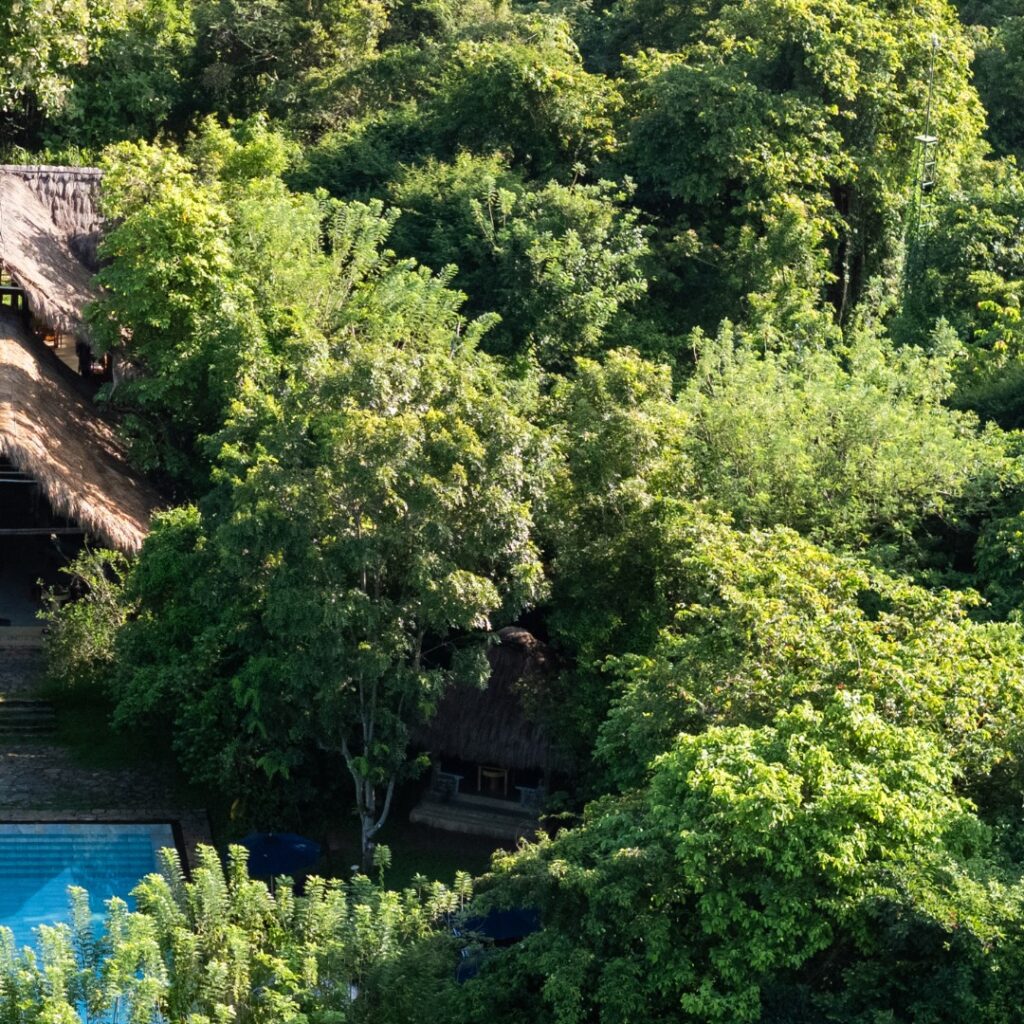
This makes Gal Oya not just a wildlife sanctuary, but also a place where older human cultures still remain unbroken.
Conservation and Challenges
Although relatively well-conserved, Gal Oya faces several conservation threats: Encroachment and illegal logging pose a threat to forestland.
Climate change
Rainfall pattern, which influences water level in the reservoir and thereby animal behavior, has been affected by climate change. Human-wildlife conflict, particularly with elephants, has increased around park peripheries.
Conservation is spearheaded by the Sri Lanka Department of Wildlife Conservation with support from NGOs and local people. Awareness and sustainable tourism hold the secrets to the long-term sustainability of park ecosystems.
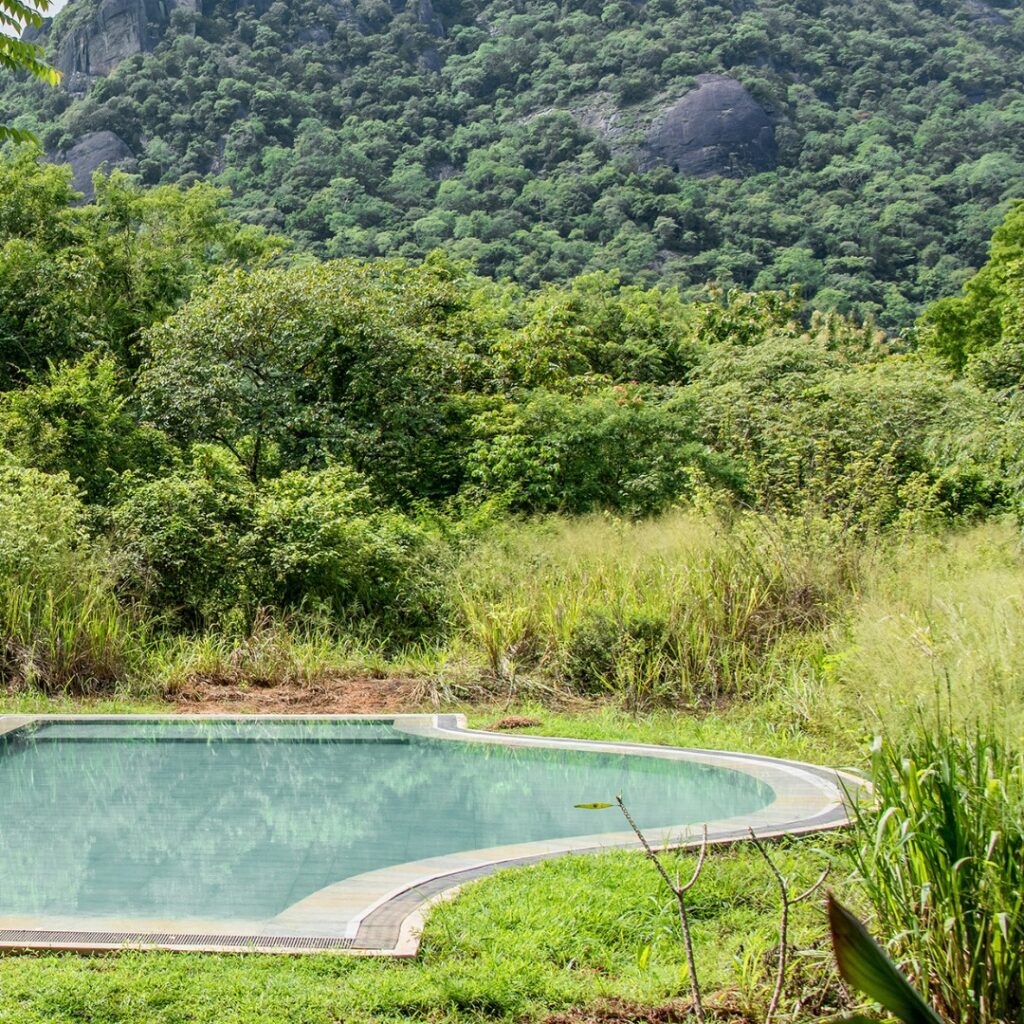
Practical Information for Visitors
Location: Near Inginiyagala, some 314 km from Colombo.
Best time to visit: March to July is ideal for wildlife viewing because water levels go down and animals gather around the reservoir.
Accessibility: Accessible via Ampara or Monaragala; travelling within the park is best made possible using 4WD vehicles.
Accommodation: Provided in the shape of basic guesthouses to eco-lodges at the periphery of the park. There is even camping in official park zones.
Gal Oya National Park offers a world-class wilderness experience in Sri Lanka. With its dramatic scenery, shy wildlife, and the luxury of witnessing elephants crossing a reservoir by swimming, Gal Oya is a secret gem in the nation’s rich environmental tapestry.
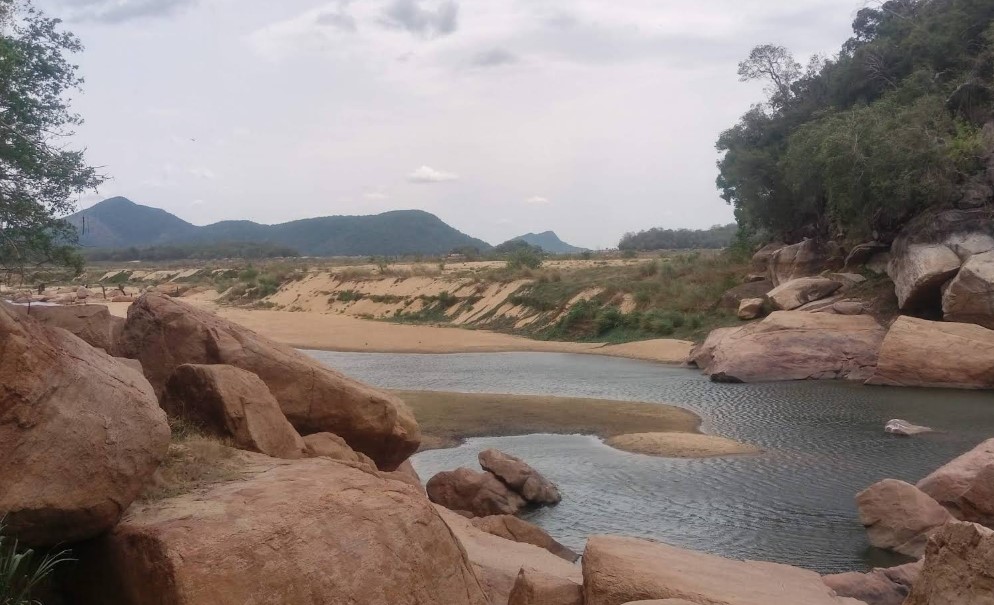
For those seeking authentic nature experiences, cultural immersion and tranquility away from the masses, Gal Oya provides not just a journey to a national park but an immersion into the heart of Sri Lanka’s natural and cultural heritage.
Contact Information
Address: Henebadda, Sri Lanka
Nearest city: Ampara
Phone: 0632 242 002
| Open Hours – 6a.m. To 6p.m |
How To Go
By Car (Approx. 6–8 hours, 300 km)
Driving is the most flexible and comfortable option. The journey takes about 6 to 8 hours, depending on traffic. You can take the Southern Expressway (E01) to Matara, then continue via the A2 and A24 roads through towns like Wellawaya and Ampara. From Ampara, follow the A25 highway to Henebadda, then take a left turn onto the road leading to the park entrance, which is about 5 km away.
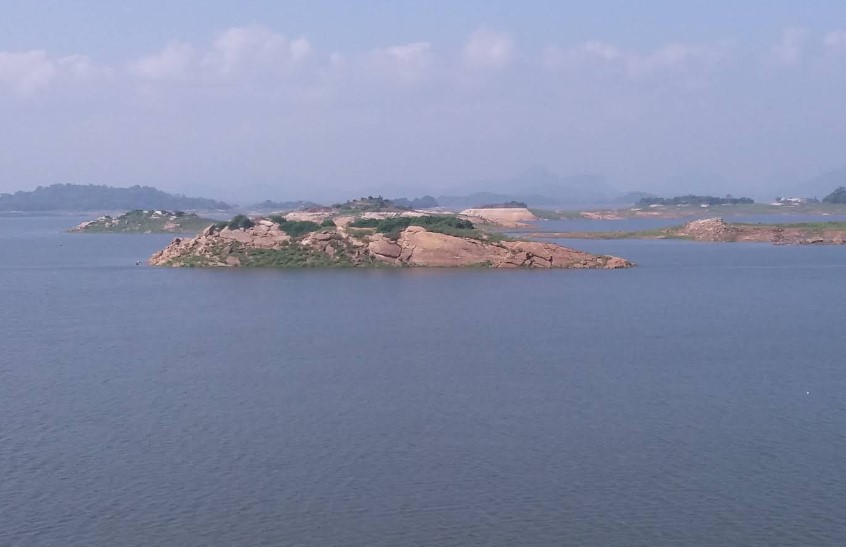
By Public Transport
- Bus to Ampara: Take a bus from Colombo to Ampara, which takes approximately 6 to 7 hours. From Ampara, you can hire a tuk-tuk or taxi to the park entrance.
- Bus to Henebadda: Alternatively, take a bus from Colombo to Ampara, then another bus to Henebadda. From Henebadda, the park entrance is about 5 km away; you can walk or hire a tuk-tuk.
By Air
For a quicker but more expensive option, you can take a domestic flight from Colombo to Ampara or Batticaloa. From either airport, it’s a short drive to the park.
Activities at the Park
Gal Oya National Park offers unique experiences like boat safaris on the Senanayake Samudraya reservoir, where you can see elephants swimming and enjoy birdwatching. Guided boat and jeep safaris are available, and it’s recommended to book these in advance through local operators or accommodations.
Best Time to Visit
The best time to visit is during the dry season, from March to July, when wildlife sightings are more frequent. The “Elephant Gathering” occurs from August to October, offering a unique opportunity to see large herds of elephants.
Map of Gal Oya Valley National Park
